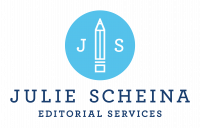Last week, I talked about the importance of reading for enjoyment. However, reading for enjoyment doesn’t mean that authors shouldn’t also read analytically. My second top tip is to read like a writer—essentially, to study published books in order to understand the tools their authors used to create them. While these two approaches are on opposite ends of the spectrum, they each have an important purpose in the writer’s toolbox.
To use an example from outside the writing world: reading for enjoyment is like going out to eat with friends, while reading like a writer is like going out to eat as a chef who wants to replicate the same meal at home. If you’re a chef, ideally you’re not approaching everything you eat with this type of intense focus; likewise, writers shouldn’t approach everything they read as an instructive exercise.
As such, one of the keys to reading like a writer is being intentional about the books you choose to study. With your current writing goals in mind, identify what you hope to learn from each of the books you select. For instance, you might study authors who excel in areas you struggle with—whether that’s writing humor or emotion more effectively or crafting stronger characters and relationships. You can also study books in unfamiliar categories and styles—such as learning about a new genre, tense, perspective, or structure.
Think of your selections and goals as your personal writing syllabus. Clarifying what you want to learn will help to narrow your focus as you study each book. This will also create a distinction between the books you study and those you read for pleasure. You can take this one step further by reading books in different genres or formats than those you are currently studying.
As you unpack how the authors crafted their books, ask yourself questions related to your writing goals. For instance, which scenes are the most emotional, fast-paced, tense, scary, intriguing, satisfying, believable, etc.? Which scenes are less effective? What character traits, setting details, or world-building elements has the author highlighted in each scene? What has the author purposefully left out of these scenes? How has the author utilized sentence, paragraph, and scene length? How has the author balanced narration, action, and dialogue? If you had written this book, what would you have done differently?
Keep in mind that you don’t necessarily have to like a book or even read the entire book in order to learn from it. For example, if you are focused on crafting stronger opening chapters, you might study ten or twenty book openings without reading the full book. Likewise, if a certain scene or character frustrates you, try to pinpoint why; this can allow you to identify the types of stories and characters you gravitate to, and it can help you to avoid similar pitfalls in your own writing. On the other hand, if you find yourself thinking about a story long after you finish it, you might choose to go back and try to unpack how the author achieved it. However, remember that you might not be able to return to a favorite book with the same eyes after you’ve spent time picking it apart.
Lastly, if you truly want to dig into a certain book, you can research whether the author has made their previous drafts available for study. Authors like Ellen Raskin and Kate DiCamillo have donated drafts of their work to research collections for this purpose. Another option is to consider making a reverse outline for all or part of a book that you’d like to better understand. While a reverse outline is too time-intensive to undertake for every book you study, it can offer another view of a story’s structure or how an author developed characters, relationships, mysteries, etc. over the course of a book.
No matter which approach you take, the more you read, the more tools you’ll add to your writer’s toolbox. Next week’s letter will talk about putting those tools to use with my third top tip: writing with intention.
Your Editor Friend,
Julie
